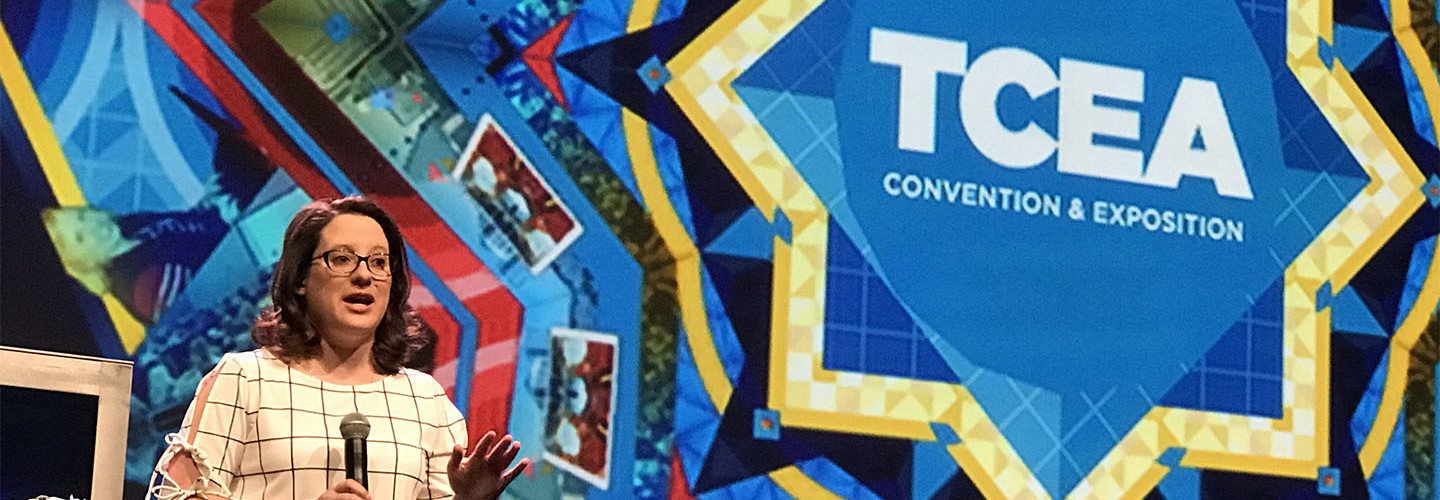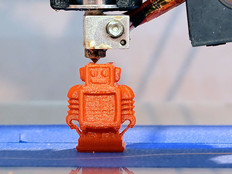TCEA 2018: Small Steps Lead to Big Wins in Blended Learning
There are an ocean of possibilities with blended learning, so it’s best to dip your toes in the water rather than jumping in and drowning, according to an expert who spoke Feb. 8 at the TCEA Convention & Exposition.
“Think big, but start small,” said Mary Rizzi, educational technology coach for Beaufort County School District in South Carolina, which educates more than 21,000 students.
Blended learning gives students “the choice of the time, place, path or pace of their learning,” Rizzi said. “Technology is usually involved. It’s such a great opportunity for our students. Times are going to change, so we are teaching today’s kids to live in tomorrow’s world.”
SIGN UP: Get more news from the EdTech newsletter in your inbox every two weeks!
The Station Rotation Eases Teachers in to Blended Learning
There are several aspects of blended learning, but Rizzi focused on one model for her talk — station rotation, where students move to different stations in the classroom on a fixed schedule or at the teacher’s discretion.
“Station rotation is the easiest one to try if you’re new to the blended learning process,” she said. “You don’t have to reinvent your entire classroom for it.”
Before employing the model, start the morning or class with a group instruction or mini-lesson, Rizzi suggested.
“You want to make sure you keep the sense of community within your classroom, even though you’re all going to split up and go your own ways,” she said. “A nice thing to do also is at the end of the period have the kids come back and discuss what happened that day in stations.”
Rizzi shared three station rotation models.
- Individual — Students in this station use quiet time to get work done.
- Group — Teamwork is a vital component in blended learning models, and group is a necessary station, Rizzi said. “Even though it’s an individualized learning plan, blended learning is also a way for students to learn to collaborate, so the students who work together on a project, or create something, can use it to then show their learning,” she said.
- Teacher-centered — Here, students rotate to the teacher's station for one-on-one instruction or within a small group. “In a small group, students might be more apt to ask you a question as well,” Rizzi said.
Apps and Other Digital Tools Support the Blended Approach
There are endless blended learning apps to help teachers, Rizzi said.
“Do not try to implement them all at one time; that will overwhelm you and your students,” she said. “Pick one, learn it really well, show it to the kids. They’ll learn it even better than you.”
For hosting content, Rizzi suggested Google Classroom, Edmodo, Padlet and Tes Teach.
“Google Classroom and Edmodo are great tools for providing information to students and you can interact with the kids in a safe way. They are like Facebook for school,” Rizzi said.
Padlet is an online corkboard, while Tes Teach allows teachers to post their lesson plans online.
“Students can work through your lesson plan for the day while you walk around and talk to the kids and give them that individualized attention they might need,” Rizzi said.
Videos also are an important tool in blended classrooms, helping to fill in learning gaps, Rizzi said. She uses BrainPOP, Khan Academy, Edpuzzle and Screencast-O-Matic for video lessons.
For information sharing, Rizzi offered Flipsnack, Sutori, Pear Deck and G Suite. And for learning games, she suggested using Quizizz, Quizlet and Sugarcane.
“Learning games are a great way to reinforce what we did in the classroom,” Rizzi said. “There are tons of resources on these sites, so if you’re looking to start blended learning, try one of the learning games first, and take the content that’s there for you, get comfortable with it and give it to the students. It will trick them into learning.”
EdTech will feature articles on breakout sessions and the latest trends from TCEA 2018. Check out more of our coverage on the TCEA 2018 conference page.








